Reviews
Gil Bettman
USA, 1986
Credits
Review by David Carter
Posted on 19 December 2012
Source German import DVD
Categories Rock Follies II
Never Too Young to Die burst on the cinematic landscape in 1986, one of the first in a line of unwelcome ideas to spring from the mind of actor/director/writer/producer Steven Paul. Paul had been responsible for Jerry Lewis’ career-killing Vonnegut adaptation Slapstick (of Another Kind) in 1982 and would later go on to write all five entries in the Baby Geniuses franchise, establishing him as one of the least successful filmmakers of the past thirty years. Yet Never Too Young to Die is quite possibly the highlight of Paul’s undistinguished career. This is not because it lacks the missteps of his other works, but because it condenses and distills them all into a single film. Never Too Young to Die is a failure at almost every level of filmmaking, and yet is easily the most compelling of the mid-eighties cycle of teen action films, both because and in spite of its many flaws.
Lance Stargrove is the champion gymnast at his military academy, but he’s filled with anxiety for the upcoming meet, albeit for reasons other than his competition. The next meet is on Parent’s Day, and Lance’s strained relationship with his absentee father is at the forefront of his mind. Unbeknownst to Lance, his father’s emotional distance is not by choice. Drew Stargrove (former Bond George Lazenby) is actually the nation’s top secret agent, tasked with the defending the US against threats of any kind. To that end, he’s kept Lance in the dark about his double life as a way to protect him, knowing that any of his enemies would be quick to harm Lance given the chance. Case in point: the nefarious Velvet Von Ragnar, who is planning on destroying Los Angeles by contaminating the water supply with nuclear waste from Diablo Canyon. Drew Stargrove has the computer disc Ragnar needs to complete his evil plan, and, rather than bothering with a fiendish trap, Ragnar simply murders the elder Stargrove immediately upon learning the he’s hidden the disc elsewhere.
Understandably shaken by his father’s death, Lance is even more unnerved by the large crowd of mourners he doesn’t recognize at the funeral and learning that he has now inherited a large farm upstate. Upon arrival at farm he finds the beautiful Danja locked in mortal combat with two of Ragnar’s muscle-bound thugs. Lance proves to be enough of a distraction to allow Danja to defeat her foes, and as repayment, she fills him in on all the details of his father’s life of which Lance was unaware. Lance joins Danja in her quest to stop Ragnar but initially proves to be a liability to her. Later, with Danja captured by Ragnar’s men, Lance becomes inspired to carry on the legacy of his father and rescues Danja and sets out to take down Ragnar on his own.
In a bid to possibly have crossover appeal with their existing fans, Paul and director Gil Bettman tapped musicians to handle acting duties for the three principle roles in Never Too Young to Die. KISS bassist Gene Simmons is the film’s de facto star as the hermaphrodite terrorist Velvet Von Ragnar. When not leading an army of Road Warrior-inspired thugs into battle, Ragnar performs a punk-burlesque act in a club called the Incinerator, patronized by androgynous glam metal bikers. Prince protégé Vanity plays female super-spy Danja Deering, but the film’s true star is then-soap opera heartthrob John Stamos as Lance Stargrove. Stamos’ tenure on TV’s General Hospital played up his musical inclinations by having him lead the fictional group Blackie & the Riff Raff, but he began his legitimate musical career in 1983 when he joined the remnants of the Beach Boys as their touring drummer, a job he still holds today. Unlike Simmons, neither Vanity nor Stamos lend their musical talents to the film.
Never Too Young to Die doesn’t stray far from the standard format of eighties’ action cinema. Where it distinguishes itself, however, is in its complete disregard for logic, even the often skewed logic of the genre. A perfect example of the type of logic employed in the film can be seen during Lance’s rescue of Danja. She is shackled in an industrial incinerator and he races to free her, and the action montage is interspersed with shots of a temperature gauge slowly rising. Such a scene could have appeared in any action film but Never Too Young to Die takes a far more bizarre approach to it, though, showing the temperature gauge reaching an unbelievable five hundred degrees. Danja is rescued, of course, and is no worse for wear or even sweating, and to free her, Lance grabs a presumably white-hot metal shackle with his bare hands. This scene is indicative of the film’s litany of half-formed ideas that seem to not only defy logic, but run in direct opposition to it.
Most of the film’s illogic is, unfortunately, just as glaring as Danja’s imperviousness to heat, yet realized in ways that are far more entertaining for the audience. The fact that a government agency (the film never explains exactly which one) turns over the reins of a top secret mission to a teenage boy solely because his father was a good agent strains credulity, as it does that the boy then proves to be a far more competent agent than his father without the years of experience or training. The film actually attempts to explain this by suggesting that Lance shared a type of psychic bond with this father that facilitated the transfer of his skills upon death, and that these latent abilities were awakened when Lance looked at the Stargrove family crest in a moment of dire need. No such paranormal explanation is given for the similar sudden transformation of Cliff, Lance’s computer whiz roommate, into a full-on action hero with no compunction against murder. Cliff is the film’s deus ex machina, reappearing after a long absence with the computer disc all the characters have been searching for and with a cadre of powerful weapons of his own design. These and the dozen or so other more bizarre touches give Never Too Young to Die an action-comedy/spoof feel, but the remainder of the narrative implies that this is possibly unintentional.
Stamos and Vanity are more known for their acting work than their music, but Never Too Young to Die’s clear star is Simmons as Ragnar. Simmons is underrated as an actor, and turned in three outstanding villainous performances in the early eighties and a brief but memorable cameo in Trick or Treat. Never Too Young to Die is his best performance and the only one of these roles that sees Simmons playing a character that is at odds with his hyper-masculine rocker image. Simmons’ performance runs the gamut from standard action cinema villainy to over-the-top camp and he often serves as the film’s lone bright spot—a welcome respite from the remainder of the film’s otherwise bland performances.
Steven Paul, the brains behind Never Too Young to Die, was evidently so enamored with the ideas he put in the film that he reused them, with little change, in the Corey Haim vehicle The Double 0 Kid, even reusing the name “Lance” for his hero. Paul was safe to steal from himself because the film was seldom seen upon release. It left theaters as quickly as it entered, and the only contemporary news articles or reviews to make reference to the film do so only to say that Simmons “would rather forget” it. It has found a second life among cinephiles, however, becoming a coveted VHS due to its being unavailable on DVD. Ultimately, Never Too Young to Die represents all that is bad about eighties’ action cinema, yet some will see these failings as strengths and love the film. Despite this, the difficulties of obtaining Never Too Young to Die will likely outweigh any “so bad it’s good” enjoyment derived from it.
More Rock Follies II
-
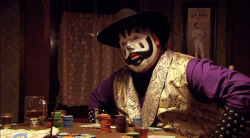
Big Money Rustlas
2010 -
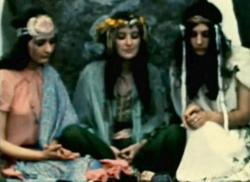
Be Glad for the Song Has No Ending
1970 -
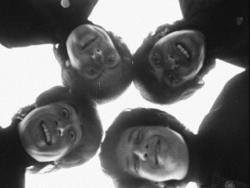
The Rutles: All You Need is Cash
1978 -
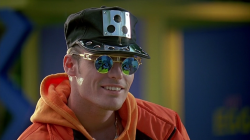
Cool As Ice
1991 -
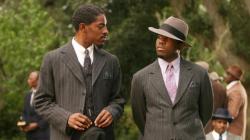
Idlewild
2006 -
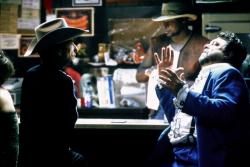
Masked and Anonymous
2002 -
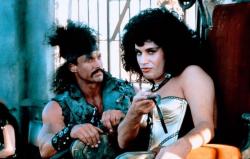
Never Too Young to Die
1986 -
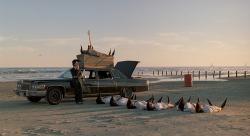
Leningrad Cowboys Go America
1989 -
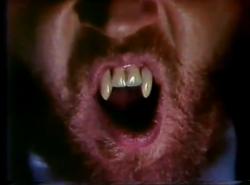
Son of Dracula
1974 -
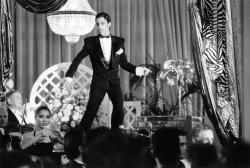
Under the Cherry Moon
1986 -

Purple Rain
1984 -
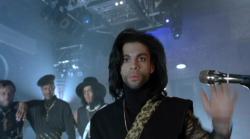
Graffiti Bridge
1990
We don’t do comments anymore, but you may contact us here or find us on Twitter or Facebook.



